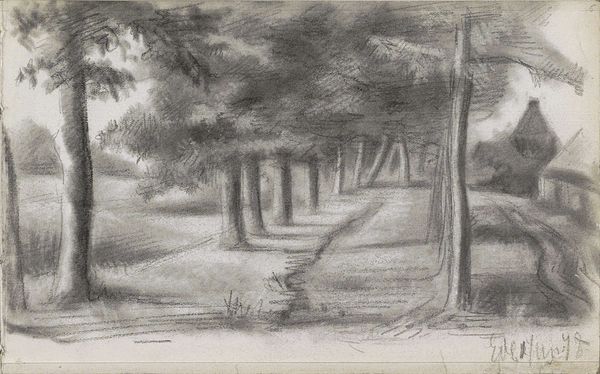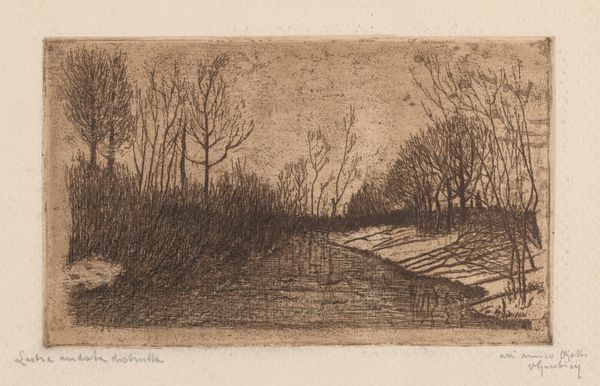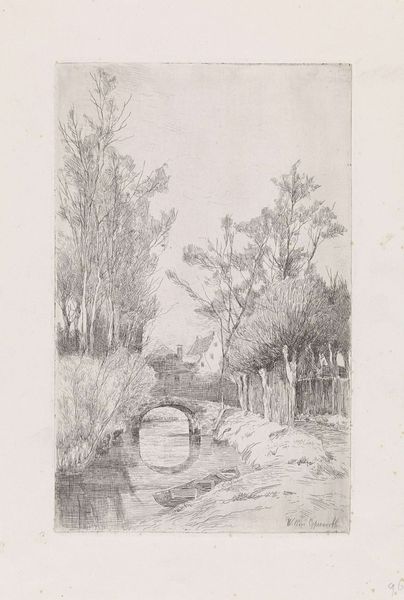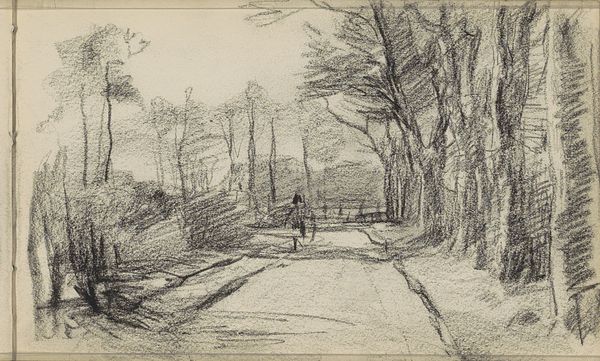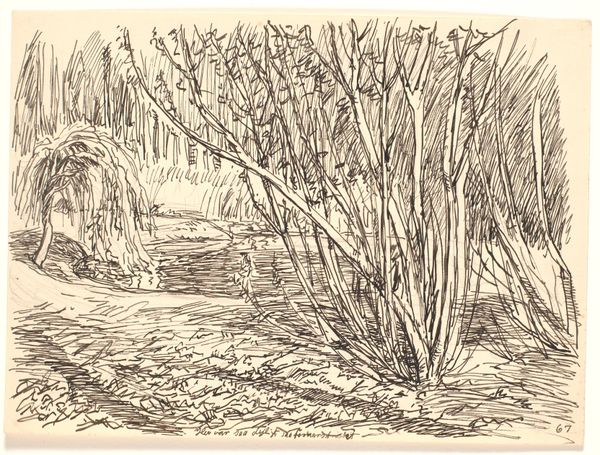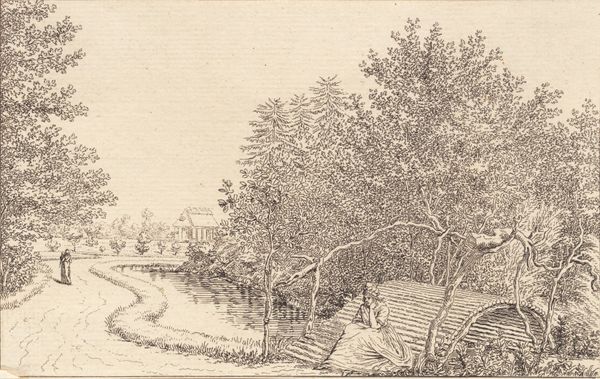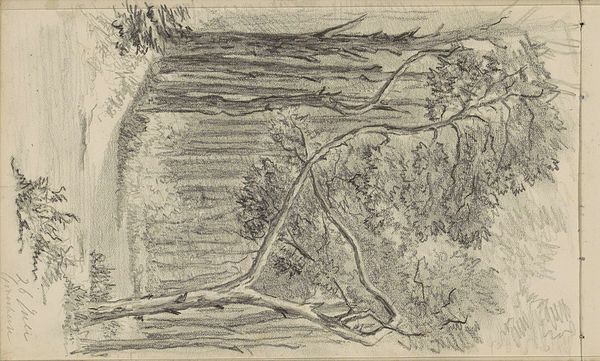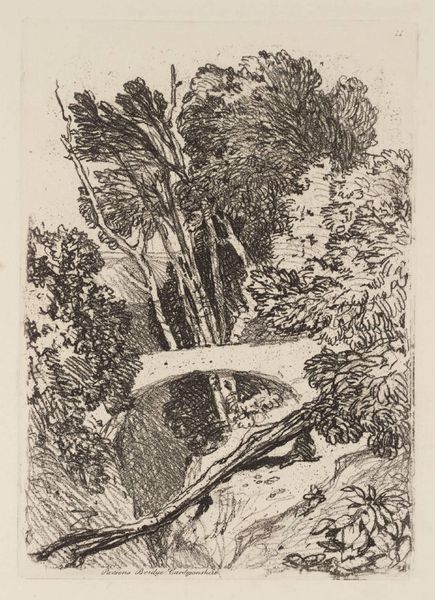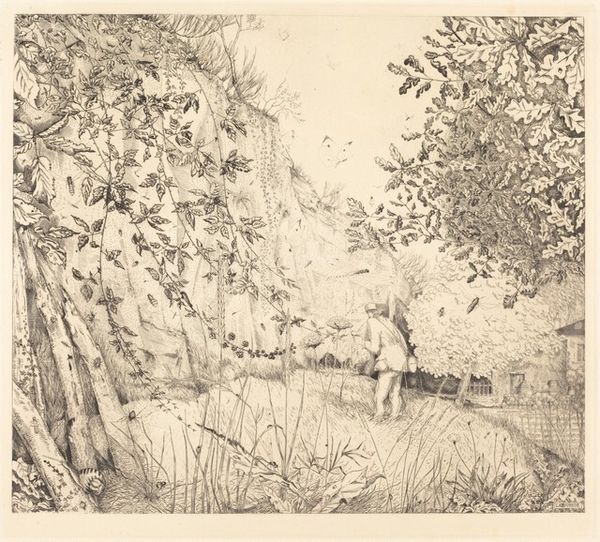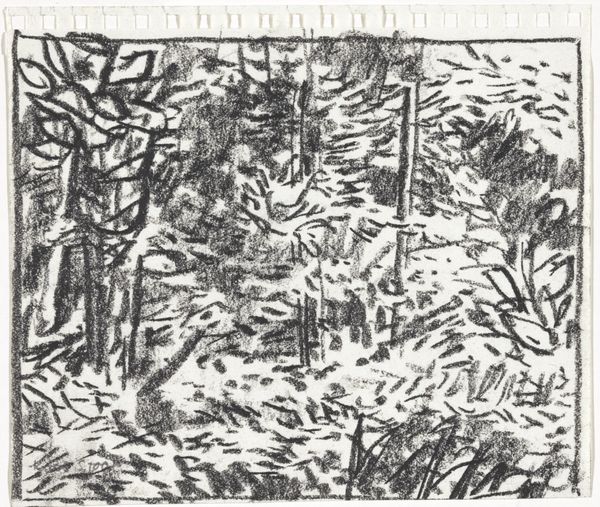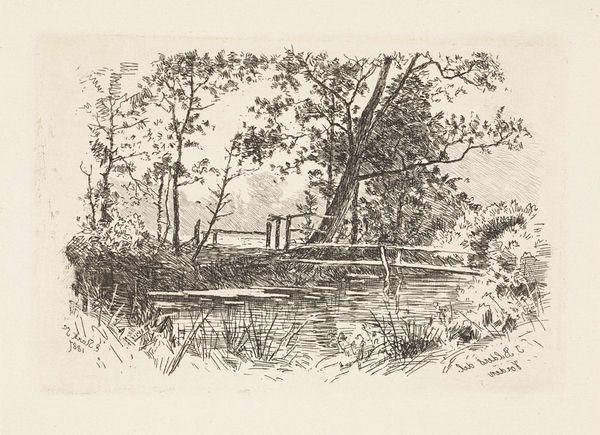
drawing, print, pencil, graphite
#
pencil drawn
#
drawing
# print
#
pencil sketch
#
landscape
#
charcoal drawing
#
pencil drawing
#
pencil
#
graphite
#
realism
Dimensions: image: 270 x 365 mm (irregular) sheet: 302 x 402 mm
Copyright: National Gallery of Art: CC0 1.0
Curator: Looking at Chuzo Tamotzu's print from 1937 titled "Road," what are your initial thoughts? Editor: There's a melancholic stillness to it. The pencil work gives it a textured, almost dreamlike quality. It reminds me of rural landscapes facing inevitable modernization, which makes sense in the historical moment. Curator: That’s insightful. Let’s talk about the artist's technique and how it informs the piece. You mentioned pencil. Indeed, the artist seems to utilize primarily pencil and graphite to bring "Road" to life. How do the limitations – or perhaps the affordances – of these readily available, easily mass-produced materials change our perspective on the imagery portrayed? Editor: Well, consider the date, 1937. It's right in the thick of the Depression. So using relatively inexpensive materials like graphite and paper means this kind of art could be accessible, even democratic, in a way. This wasn't some precious oil painting meant for a wealthy patron. Curator: Exactly. Its very form makes it available, and its social commentary makes it relevant. And note how the use of linear perspective invites the viewer to physically enter into this pictorial space. Editor: And that single car hints at an oncoming world, the advent of automobiles transforming daily life, rural communities, and landscape aesthetics. It raises so many questions about progress, industry, and the shifting socio-economic realities of the era. Curator: That's very astute. Thinking about Tamotzu and the institutional context, how do you see this piece fitting into the narrative of 1930s American art and beyond? Editor: Tamotzu’s print presents an intriguing challenge to common interpretations of landscape art by overtly linking nature and technology. Rather than viewing nature as pristine, idyllic and divorced from modern life, the telephone poles and lone automobile integrate with natural surroundings as a part of daily experience. I leave wondering about the relationship between art, labor, and progress during periods of significant upheaval. Curator: Fascinating considerations. Thank you. Editor: A pleasure.
Comments
No comments
Be the first to comment and join the conversation on the ultimate creative platform.

